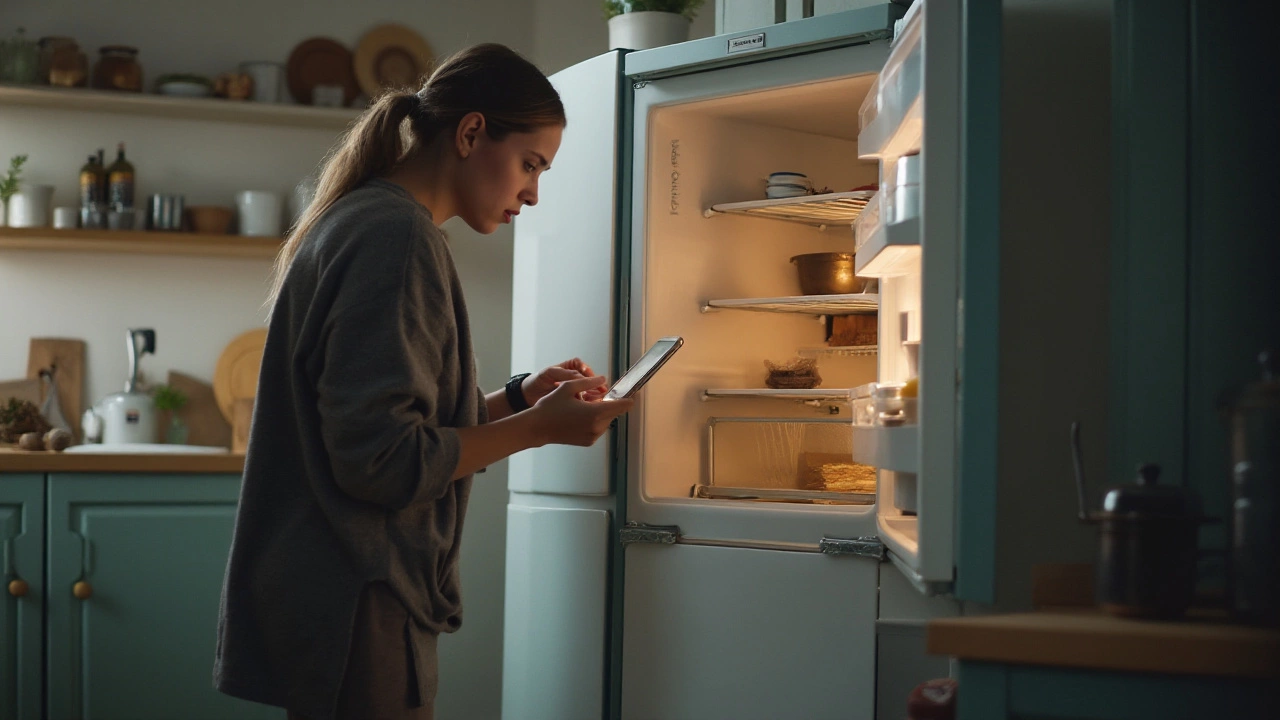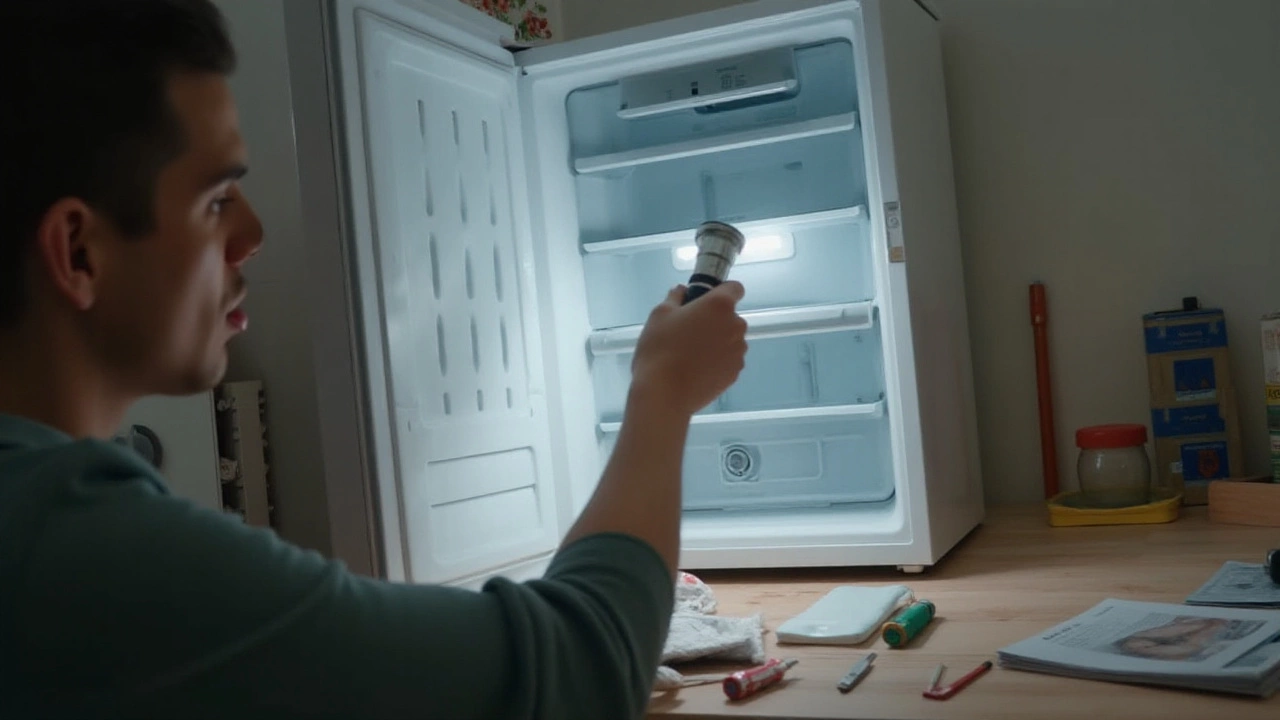If your freezer has suddenly stopped doing its most essential job—freezing—you're likely hunting for both solutions and a wallet-friendly way to fix it. Freezers are one of those appliances we take for granted until they fail us, often without warning.
The cost of fixing a freezer that won’t freeze can vary greatly, but the peace of mind that comes with a properly functioning appliance is invaluable. Before diving into potentially costly repairs, there are some initial checks and fixes you can perform yourself that might save you both time and money.
From understanding common causes like faulty thermostats to more complex issues such as compressor problems, there's a range of factors that can affect how cold your freezer gets. Navigating this chilly conundrum involves knowing when it's a simple fix and when to call in an expert. Taking proactive steps can also prevent these issues from cropping up in the first place.
- Common Freezer Problems
- Basic Diagnostic Steps
- DIY Fixes and Their Costs
- When to Call a Professional
- Understanding Repair Costs
- Preventive Maintenance Tips
Common Freezer Problems
Freezers, just like our loyal companions, often give subtle signs before they completely fail at their primary task of keeping things cold. Identifying these signals early can save a great deal of hassle and money down the line. A common issue many people face is a freezer that runs but doesn't actually freeze. Often, this challenge arises from a malfunctioning thermostat, which fails to regulate the appliance's temperature effectively. Another frequent culprit is the door seal or gasket. When this wears out or becomes damaged, warm air can seep into the freezer, disrupting its chilly environment and preventing it from reaching optimal freezing temperatures.
Another typical problem is a clogged or frozen evaporator coil. When these coils are unable to release absorbed heat, the freezer's cooling efficiency drops significantly. This can also lead to frost buildup, which ironically is the freezer's way of icing up while trying to cool contents, resulting in an uneven temperature distribution. The defrost timer, which automatically engages the defrost heater to melt frost on the coils, could also falter, leading to similar issues. If you've been proactive about maintenance but still experience freezing troubles, a faulty compressor might be the issue. It's the heart of the cooling mechanism, and when it doesn't function properly, the system simply can't freeze anything effectively.
In some instances, it's just a matter of airflow being blocked. A crowded freezer can prevent cold air circulation, causing some sections to be warmer than others. It's sometimes about overlooking the simple solutions while searching for a technical problem. On rare occasions, these complications can stem from incorrect settings inadvertently set on the control panel. A system reset sometimes solves the problem. According to an appliance expert quoted in Home Appliance Magazine,
"Routine checks and understanding your freezer's basic functions can avert many common issues before they escalate. Don't ignore little signs as they often lead to bigger issues."
Having been through a range of freezer trials myself, I can vouch for the simplicity and complexity coexisting in this space. With the ever-evolving models and features in today's markets, even the smartest freezer can suffer from age-old problems. Eventually, addressing these common freezer repair issues not only keeps your appliance running efficiently but also ensures the safety of your food and conveniences in your daily life. By keeping an eye on how your freezer behaves and performing basic regular checks, you can keep such inconveniences at bay. It’s crucial to remember, basic vigilance goes a long way in ensuring longevity and efficient performance of your freezer.
Basic Diagnostic Steps
Before you call in the professionals to tackle your freezer repair, there are some basic diagnostic steps you can take to identify the issue. Many times, these appliances throw temper tantrums over the simplest things like a door left ajar or an overstuffed interior. Begin by checking if any ice or frost is blocking the airflow inside the freezer. An obstructed or clogged vent could easily be the culprit behind the malfunction. Vent systems allow cold air to circulate properly, ensuring even and effective cooling. Take a thorough look around and behind these vents for anything that might be obstructing them.
Another common reason your freezer might not be freezing is a faulty temperature control dial or thermostat. Often overlooked, the thermostat is a crucial component, and adjusting it might resolve your issue. Turn it to the coldest setting and listen for a click sound, which usually signifies the compressor activating. If no sound is heard, this might indicate a thermostat problem. You can purchase a replacement dial at an affordable cost and install it yourself with a bit of patience and guidance from online tutorials.
Next, examine the condenser coils at the back or underneath the freezer. These coils should be free from dust and debris. Cleaning them might not sound thrilling, but it sure is rewarding when your freezer starts freezing, as it should. A stiff brush or handheld vacuum works wonders in clearing away dirt that might cause the unit to overheat and underperform. Imagine realizing that all it took was a quick clean to sort the problem!
It might be worth it to check if the evaporator fan is functioning correctly. These fans play a crucial role in circulating the air; without them, your freezer won’t freeze efficiently. If this fan is not humming away, you could be in for trouble. The fan is generally located behind a panel in the back of the freezer, drive carefully when checking it. A default test is to wait for the door switch to be triggered. Sometimes, disengaging and re-engaging this switch can help diagnose or even rectify a jammed fan.
"Approaching online communities like 'Repair Clinic' can offer wonderful insights into the practical steps needed to problem-solve common appliance vexations," suggests an article from the Appliance Repair Institute. They provide a trove of information for those eager to learn to repair household appliances independently.
Finally, don't forget to test the electrical connections. Ensure that the unit is plugged in properly and that the outlet is functional. Reset the circuit breaker or replace any broken fuses to restore power. Sometimes, tripped fuses and unplugged cords can turn into a bout of frustration, sending you on a wild hunt for phantom issues that don't really exist. It is shocking how often the root cause is something simple. With a keen eye and a little DIY spirit, these steps can save not only your sanity but also your hard-earned money and time!

DIY Fixes and Their Costs
Freezers are a staple in the kitchen, diligently preserving our food until, sometimes, they don’t. When your freezer isn’t freezing, a bit of DIY spirit might save both the appliance and a hefty service call fee. Start with the basics - some of the most common issues are simple to fix and won’t drain your wallet. A humid environment can cause a freezer to falter, for instance, clogging the vents with ice. Check to see if ice build-up is blocking airflow inside the freezer, as clearing this blockage can immediately restore function. This task might only require a bit of patience and a hairdryer, costing you nothing if you already have these tools on hand.
Another often overlooked culprit is the door seal. Over time, the gasket around the door loses its grip, letting out the cold air. Recognizing this issue can be as simple as closing the freezer door on a piece of paper; if you can pull it out easily, you likely need a new seal. Replacing a freezer gasket is a relatively straightforward task that usually costs between $30 and $50, depending on your model. Reinstalling a seal might sound daunting, but most new gaskets come with instructions, and it’s a manageable DIY fix.
Moving on to the thermostat, quite a few cases of non-freezing can be traced back to this component. If your freezer is too warm even on the coldest setting, suspect a faulty thermostat. Fortunately, replacing it doesn’t typically require professional help. Thermostats are generally available for under $100, and many online guides offer step-by-step instructions for replacement. Just be sure to unplug your freezer before tinkering. If you have doubts about this procedure, remember what DIY Guru Bob Vila says, "Sometimes doing it yourself isn't just about saving money, it's about the satisfaction of solving the problem on your own."
Temperature control boards can also go awry, though this is less common. A busted control board creates heat where none should be, meaning your freezer gets cold, but not cold enough. Replacing it yourself might run you about $150 for the part. It’s slightly more complex than replacing a thermostat, so judge your own comfort with electronics carefully. In addition, amidst the practical tips, here’s a fact: many freezers these days use electronic controls rather than knobs and dials, which can mean a simple reset solves a surprisingly large number of issues.
With some simple household tools and a bit of knowledge, several adjustments can make your non-freezing freezer frost over pleasantly again. But always remember, while the internet is full of instructional videos, they’re no substitute for skilled technicians when situations spiral beyond our DIY capabilities.
When to Call a Professional
There comes a point when your trusty home DIY strategies just aren't enough to bring your obstinate freezer back to life. It's often practical to recognize when it's time to reach out to a professional, particularly if you've exhausted all other options. When a freezer doesn't freeze properly, some problems may lie in the realm of complex technical issues that necessitate expert intervention. Refrigerant leaks, for instance, are one such case. These leaks aren't just tricky to detect but also dangerous owing to the chemicals involved, such as freon, which require careful handling and specialized tools.
Another critical instance that calls for professional help is when you face a faulty compressor. The compressor is essentially the heart of your freezer's cooling system. It pumps refrigerant through the coils, facilitating the essential heat exchange that produces cold air. If the compressor is failing, it might make unusual noises or cease to operate entirely. Tackling a compressor issue without appropriate skills and equipment might not only lead to further damage but poses an electrical hazard. In such scenarios, a skilled technician is your safest and most cost-effective bet.
Specific electrical issues can also serve as a red flag that it's time to call in the troops. If your freezer trips the circuit breaker or emits a burning smell, it's imperative to contact a professional immediately. Such issues might indicate faulty wiring or a short circuit, which can escalate into a fire risk if left unchecked. Experts have the tools and knowledge to safely navigate such hazards and ensure your appliance is restored to working order without compromising safety.
Benefits of Professional Repair
The benefits of calling a professional extend beyond just fixing the immediate problem. Technicians not only bring their expertise and experience to the table but also often provide warranties on their work. This not only assures you peace of mind but can also save money down the road. Moreover, professionals have access to high-quality parts and equipment that are vital for more lasting and efficient repairs. Here's where their trained eye might come in handy to spot future issues you might miss on your own.Freezer repair might be an unexpected expense, but it often pays off significantly to avoid the risks of a DIY fix gone wrong. An experienced professional can perform extensive diagnostics and recommend tailored solutions that you might not have thought about during your troubleshooting journey. By addressing the root cause of the problem efficiently, they provide assurance that your freezer won't become a repeat offender soon. Weathering the call-out fee and labor costs upfront might seem hefty, but savings accrued from preventing further damage usually balance it out.

Understanding Repair Costs
When your freezer is on the fritz, understanding the potential repair costs is crucial to making informed decisions. A common perception is that fixing a malfunctioning freezer might empty your pockets, but that's not always the case. The cost of freezer repair often hinges on the nature of the problem, the age of your appliance, and sometimes even where you live. Simple malfunctions like a faulty thermostat or a worn-out door seal might only set you back between $50 and $200. These parts are easily accessible and can often be swapped out with minimal fuss. However, trickier tasks like compressor repairs or coolant leaks could escalate the price tag to $200-$500—or more.
Let's take a deeper dive into the key factors influencing these expenses. Labor charges often account for a significant portion of any repair bill. Technicians may charge by the hour, with rates that might surprise you. In urban areas, the hourly rate can range from $75 to $150, yet in smaller towns, these charges might be easier on the wallet. While labor can greatly influence the total, it's not the whole story. The price and availability of replacement parts also play pivotal roles in determining how much you’ll spend. Older models might require parts that are hard to find, increasing both the wait time and costs.
If faced with a hefty repair cost, it's worth considering the potential benefits of investing in a newer, energy-efficient model. Sometimes, the math might even gear towards buying a new appliance rather than pumping more money into an old one. A telling quote by a home improvement expert goes,
"When repairs exceed half the cost of a new appliance, replacement is often a smarter choice."Weighing such advice can steer you towards the most cost-effective solution.
Additionally, warranty considerations might ease the burden on your finances. If your freezer is still under warranty, some costs could be mitigated or even eliminated. It's helpful to have your warranty paperwork handy and contact the manufacturer to check what repairs are covered. For those whose freezers are out of warranty, some manufacturers and service centers offer extended service agreements at a cost, which might be worth exploring.
Moreover, while not as exciting as researching a kitchen remodel, preventive maintenance deserves attention and can save you from future expenses. Regular defrosting, cleaning the coils, and keeping the door seals in good shape are small habits that extend the life of your appliance. Simple actions like these play a part in containing possible freezer repair expenses. Proactive care can keep pesky problems at bay and leave more money for celebration ice cream cakes or chilly weekend outings with family during New Zealand’s hot summers.
Preventive Maintenance Tips
Taking care of your freezer can save you from the headache of unexpected breakdowns and the cost of emergency freezer repair. Regular maintenance is crucial in ensuring that your appliance remains in top-notch condition. One of the simplest yet most effective steps is to keep your freezer’s coils clean. These coils, often located at the back or beneath the unit, are responsible for dissipating heat. When they are covered in dust or grime, the efficiency of the freezer diminishes significantly. A gentle vacuum or a coil cleaning brush can work wonders in removing dirt build-up. Additionally, ensuring that the freezer door is properly sealed can prevent cold air from escaping, thus reducing strain on the appliance's motor.
Another vital but often overlooked aspect of freezer maintenance is maintaining an optimal temperature. Keeping the temperature too low doesn't just inflate your electricity bill; it also increases wear and tear on the compressor. Ideally, a freezer should be set to about -18°C (0°F). Regularly checking the thermostat and adjusting as needed can help maintain this optimal setting. Ensuring ample spacing inside the freezer also aids in proper air circulation, enhancing its cooling efficiency. This proactive approach not only prolongs the lifespan of your freezer but also ensures that your foods remain fresh and safely preserved.
Listening to your freezer can also give valuable clues about its health. Unusual noises often signal problems that require immediate attention. If you hear frequent clicking or buzzing, it might indicate a failing compressor or an issue with the defrost timer. Addressing these sounds quickly can avoid costly repairs in the future. As the National Appliance Service Association suggests, "Routine maintenance is the key to a long-lasting appliance"
Routine maintenance is the key to a long-lasting appliance.. Regularly inspecting your appliance for such signs and acting promptly can prevent minor issues from snowballing into major problems.
Finally, a key to preventive maintenance is defrosting manual freezers on a timely basis. Ice build-up can impede the freezer's ability to cool efficiently, and removing this excess ice every six months or as needed can keep it running smoothly. Using a warm cloth and a little bit of elbow grease can easily tackle this task. Always avoid using sharp objects to chip away at ice, as this can damage the interior lining of your freezer. By making these simple steps part of your routine, you can rest easy knowing your freezer is less likely to need urgent repair.

